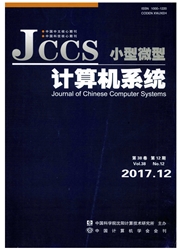

 中文摘要:
中文摘要:
随着网络技术的飞速发展和接入性能的不断提高,如今全世界的互联主干网络呈现出一种高带宽高延时(HighBandwidth-Delay Product Networks)的网络特性.在这种网络特性下,传统网络中的TCP拥塞控制协议已经开始显现出不适应性,如带宽利用率低下、流量抖动频繁等问题.近些年来,各国学者均提出一些适应这种网络环境变化的拥塞控制协议,基于这些协议中窗口调节机制所采用的反馈信息,本文将其划分为三类:基于丢包反馈的协议、基于路径延时反馈的协议和基于显式反馈的协议,并分析了这些协议的优缺点.在总结了高带宽延时网络下拥塞控制协议研究成果的基础上,进一步分析了网络中的传输延时RTT、瓶颈路由器缓存和路由器队列管理算法对现有拥塞控制协议的影响,并通过NS2对各协议在高带宽延时网络下的性能进行了一次全面的比较和评价.最后文章在总结前人工作的基础上,指出了高带宽延时网络下拥塞控制协议性能优化的研究方向.
 英文摘要:
英文摘要:
High-speed networks with large bandwidth-delay product present a unique environment where current TCP may have a major challenge to its performance (e. g. throughput deterioration, flow oscillation). A number of new TCP congestion control algorithms have been suggested to address these problems in the last few years. This paper firstly categorizes these protocols to loss-based, delay-based and ECN based three groups and describes all these protocols. Based on this study, we emphatically analyze the influence of RTT, router buffer size and AQM algorithm to the performance of congestion control protocol. Lastly a general performance comparisons and analysis result of most representative protocols are given using ns2 simulator. Subsequently, the paper summarizes the current existing open issues, and provides some further interesting directions.
 同期刊论文项目
同期刊论文项目
 同项目期刊论文
同项目期刊论文
 期刊信息
期刊信息
